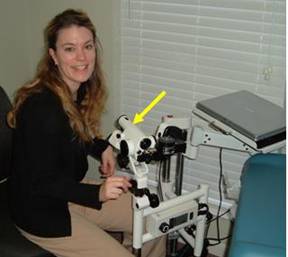Evaluation of suspected sexual abuse
Currently, the optimal evaluation of suspected sexual abuse consists of the following:
- Referral to Child Protective Services is essential, and also required by law.
- The primary health provider should document why the parent or caregiver is concerned about possible sexual abuse.
- If the child is able to describe what happened, the most qualified professional available should interview the child alone. Remember: as described above in the Physical Abuse section, the focus of this interview is to obtain the essential medical information necessary to determine the nature and extent of the child's injuries, and to ascertain whether the child may safely be sent back to his or her home. Ask open-ended questions only, such as "How did you get hurt?" and diligently avoid leading questions such as, "Did your dad hurt you?" In most communities, a videotaped forensicinterview will later be obtained at a Children's Advocacy Center, and it is important not to confuse the child or 'telegraph' to him or her which answers you think are 'right' or 'wrong.'
- The primary health provider may reasonably perform a gentle examination of the external genitalia and anus to ensure there are no serious acute injuries.
- Otherwise, except after an acute sexual assault or in a medical emergency, a more in-depth evaluation should occur in a specially-designed child-friendly environment-generally a Children's Advocacy Center (CAC). In most cases the critical piece of evidence for determining whether sexual abuse occurred will be the history provided by the child, so the child should be interviewed at the CAC by a trained forensic interviewer. A report to Child Protective Services or to a local law enforcement agency must be made before a child can be seen at a CAC.
- In many communities, a complete physical examination would also take place at the CAC and would involve the use of a colposcope, which allows for noninvasive magnified inspection of the external genitalia and anus, as well as photodocumentation.
- Depending on the physical findings and the type and location on the body of the sexual contact disclosed, testing for sexually transmitted diseases is often indicated. One or more of the following procedures may be performed:
- Culture or Nucleic Acid Amplification Testing (NAAT) for gonorrhea and Chlamydia
- Serum testing for syphilis, human immunodeficiency virus (HIV) and Hepatitis B (if the child's vaccination status is incomplete or unknown)
- Testing of genital discharge via wet prep or culture for trichomonas or other pathogens
- Viral culture of any lesion suspicious for Herpes simplex virus
- In rare instances, biopsy of a lesion suspicious for Human Papillomavirus is performed (this is uncommon)
- In postmenarchal girls, a urine or serum pregnancy test is indicated.
- Treatment of any confirmed sexually transmitted disease is required.
- Referral to a qualified psychotherapist is also indicated.

Fig. 34: Colposcope used in examinations of children for sexual abuse. The arrow points to the camera and light source, which in this colposcope model can be positioned about 12 inches away from the genitalia of the child, who would be lying on the examination table to the right. The magnified colposcope image is then visualized and recorded on the computer monitor at the upper right.

Fig. 35: The Galveston County Children's Advocacy Center-a child friendly facility that provides a variety of services to child sexual abuse victims and their families: forensic interviews, physical examinations, psychotherapy and other support services. As of late 2008 there were 62 Children's Advocacy Centers across Texas, and more than 500 nationwide.